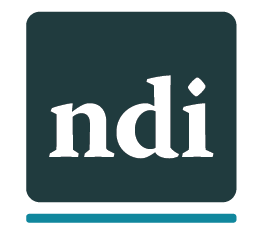By Darlene Aderoju, America Saves
It’s National Financial Literacy Month, which makes it the perfect time to learn what it takes to become a good saver. The good news is that saving for your future can be a lot simpler than you might imagine.
Use this month and every day moving forward to get yourself in a comfortable financial position. Here are three things you should know about saving as a person with a disability or as the caretaker of a person with a disability.
- Saving is not just about having a certain amount of money, it’s an activity
When you make the decision to save money, understand that saving is an ongoing activity that will benefit you over time. Don’t overwhelm yourself by trying to save too much, too soon. Start small, at an amount that you can afford to save regularly, and think big, so you can continue to save in the long run.
If you’re unsure of where to start, an emergency fund is a great option. Aim to save $500 in a rainy day fund that you can access when life’s emergencies pop up, such as a broken down car or an emergency room visit. Once you reach that benchmark, set a goal of saving for three months of expenses.
- People with disabilities are ABLE to save
Many Americans with significant disabilities are eligible to open and save in a new type of savings account called an ABLE account, created by the Achieving a Better Life Experience Act. The accounts are tax-advantaged savings accounts where the account owner, their family or their friends can make contributions.
But here’s the best part: tens of thousands of dollars can be saved in an ABLE account without affecting eligibility to receive critical benefits like Supplemental Security Income (SSI), SNAP and Medicaid.
If you have significant disabilities that began before you turned 26-years-old and are already receiving benefits through SSI or Social Security Disability Insurance (SSDI), you are automatically eligible to create an ABLE account.
If you do not receive SSI or SSDI, you could still be eligible to open an ABLE account. If you meet Social Security’s definition and criteria regarding significant functional limitations, and receive a letter of certification from a licensed physician, you may qualify.
You can use your ABLE account to fund any expense related to living with a disability. This includes basic living expenses, education, assistive technology, hiring personal care attendants, accessible housing, healthcare costs, transportation and more.
ABLE accounts are operated by individual states. You can create an ABLE account in any state that accepts outside residents into their program no matter where you live. Each state’s programs offer different terms, so it’s best to shop around to find out which programis best for your needs. (Learn more about ABLE accounts through National Disability Institute’s (NDI) ABLE National Resource Center)
Bonus: Your friends and family can send money to your ABLE account online as a gift contribution. You can even create a gifting page with your account so your loved ones can add money to your savings. One thing to note is that you won’t be able to use the money gifted to you until 30 business days have passed.
- Savers with a plan are twice as likely to save effectively
Here’s our favorite trick: savers with a plan are twice as likely to save successfully. That’s it! Hack that psychology by setting your savings goal and making a plan this month. As you begin your savings journey, keep in mind that your decision to save should be a lifelong one.
We partnered with National Disability Institute to offer you the America Saves pledge with a goal of saving for disability-related expenses. When you take the America Saves pledge, you make a commitment to yourself to save money. Tell us how much money you want to save and how long you want to do it, and we’ll keep you motivated to reach your goal. We’ll send you helpful emails and reminder text messages to keep your savings momentum going.
Make a commitment to save money today – you’ll be glad you did.
